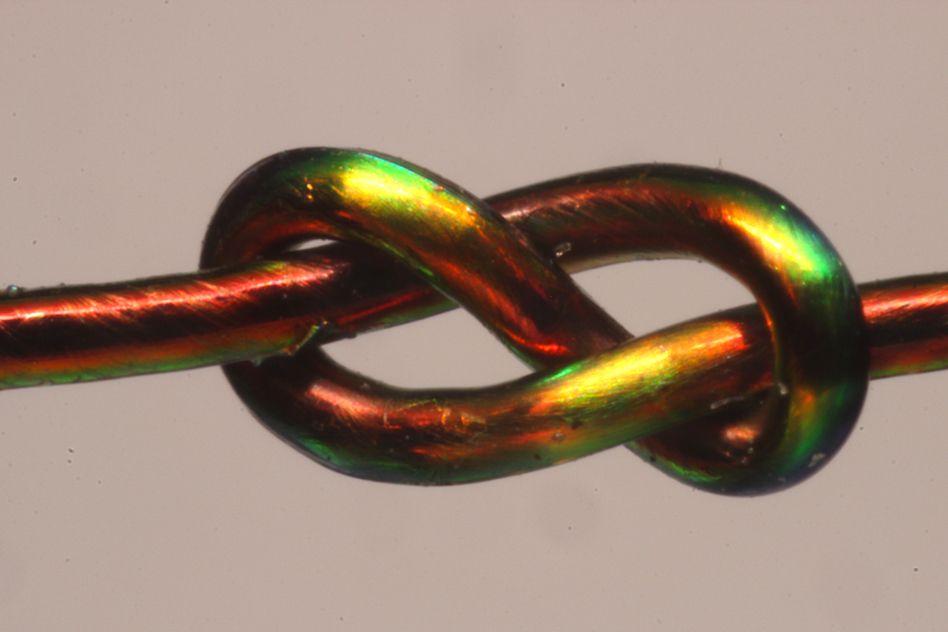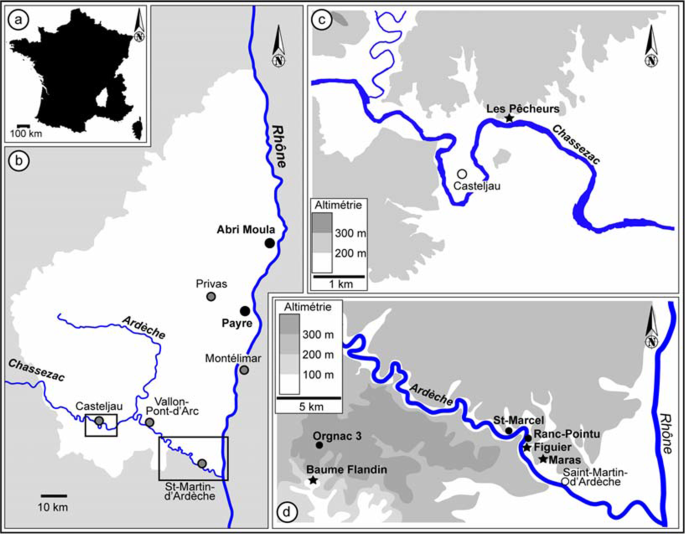YW.
To get the clean pop-off effect needs some weight thru main frame green from load pull
>>when pull release pin yellow .
So just on finger not pulling load end or just weight of keys may not give the total picture.
>>paracord or puny diam flexible double braid, many other
virtually only deformity to most loaded part is the mount itself (inescapable) not so much other rope parts.
.
Note if last leg of green thicker mainframe bearing most force had lest leg out
>>would invert lacing on support to form Muenster automatically if less than let's say 22# resisting the 25# load
cuz needs matching plus to invert to belay load , here the slip and then pin just match back and prevent that..until pin pulled
.
Quick Release to controlled lower more like number_i below.
i have found this page to be cause of much recent insomnia in it's building:
.
This is more towards what i'm trying to draw to in re-examination of all hitches etc. to focus on number of arcs and if/how crossed;
where understand a group of similarly based hitches and how their differences lend to different scenarios.
Seeing the base parts becomes a mnemonic whereby remembering sets of familiar moves to tie, rather than all individual nuances that must be traced to form the lacing. Trying to show things not generally shown together, but can be compared. And very logical genealogy of family builds and the properties of the mechanics passed on etc.
.
i try to show there are only 2 primary parts of knots: straight extensions and arcs(2x90degree turns as single unit reaching halfway around a circumference), really arcs cuz extension is just an extension of force carried.. So pic below traces (GREEN) thru uncrossed forms to find workhorse 3arc Round Turn and it's 2 crossed forms : Backhand and Crossed Turns, drilling down Backhand Turn path we find our subject matter of 1 or both legs thru OFF host crossing and then knot derivatives from there.
.
As a family the OFF host crossing grouping of Muenter and Cow etc. shows across forms inheritance of notably easier untie than uncrossed or crossed ON host forms due to counter-torque reverse of these not seen in continuous uncrossed and crossed forms(w/o reverse direction). Yet about as secure, and less tendency to walk to end of line/self tighten etc. due to anti-torque reverse thingy. Also ABoK notes several times only needs single pass around host for double bearing that can be a key balancing and angled pull mechanic.
.
(smaller version)
.
Uncrossed Forms
A>line extension primary form
B>Turn consists of a simple re-direct arc (primary form) and A>line extension to each side(arc ends stop half-way around host and line segments take over)
C>Round Turn (RT)gets into real working class force and grip control of 3arcs and extension
D>Dbl.Round Turn is simply super form of RT
E>Coil is likewise Dbl.Round Turn super form
>>>Can call RT as 2 arcs, 3rd is re-direct turn back; but short math is 3arc is most usable form, and accentuates, firms the forces even more to what look for from RT anyways..
.
Following GREEN 3arc UNCROSSED workhorse RT to descendants and find 2 crossed forms that seem to reduce grip but increase frictions to the 3arc from RT.
F>Backhand Turns where crossing is OFF host and 1 or both legs thru as a group (focus of page)
G>Crossed Turns where a riding turn bears likewise across other rope parts but this pressure is ON host, 'pasting' turns tighter to host for more friction force contact ; like would make better electrical contact to be tighter (page in some stage of lack of progress)
>>>>Sailor/Sailor Gripping, Pile/Icicle are then seen as hybrid group each containing Backhand and Crossed Turn forms in 1 lacing.
.
Find F>3arc crossing OFF host form; itself have 2 subforms(focus of page)
H>Backhand Turn proper, pretty much applying Muenter/Italian (belay) Hitch to host mount
i> Cow based forms of both legs thru the OFF host crossing as stop over-ride of belay function of 1 leg thru OFF host crossing
.
Other 1 leg thru crossing forms :
J>Tumble Hitch: knudeNoggin improvement of Highwayman Hitch's betrayals. After holding strong this releases totally cleanly
K>Slipped Backhand in contrast to Tumble Hitch is quick release to controlled lowering
L> Backhand and 2 HH's offered by ABoK (shown as opposing halfs to keep page theme). So gives also 1 leg thru OFF host crossing form with sister both legs thru OFF host crossing
M>Muled Muenter is similar, release 2 HH's (opposing shown) to Muenter control. Usually in doubled bight of long rope as shown
.
Cow Hitch (i) is also very recognizable base form, 2nd leg thru crossing stops belay function
N>Girth is same only use both legs to hold load
O>Bale/Choker Sling/Hitch is same with loop that allows legs to carry load evenly to both legs to maximize and rotate wear, also cleaner on/off motions
P>Opposing Halfs very secure, lots easier untie than continuous halfs in more of Clove finish
Q>Lobster Buoy is 'innie' form of above much more secure, MUCH easier untie than similar Clove innie finish of Bunt Line (Bunt Line is much better slip than Lobster slipped tho)
R>Stillson is a mix of old friends brought together for very secure form, as such shows theme of whole page of recognizing base forms to assemble, not each itemized move to trouble over..
.
ALL above show the proper right angle of pull across host mount; for pulling 'lengthwise' along /not across host is WORST angle of possible pull.
Friction Hitches can thus pull right angle but also can help on the 'lengthwise' pulls.
Another game changer of friction hitches is that most knots hold, some belay, but this class holds/slides/holds on command unlike any other knot species!
S>Prussic : a basic friction hitch as simply 3arc rt to each side of choker instead of single Turn as leading OFF host crossing friction hitch.
T>ABoK shows a 1 leg pull form of same
U>6 Coil Prussic >>Can add more turns for more grip but also pushes the side pull to higher leverage
V>Schwab tames some by adjusting amount of turns, but side pull is from lowest turn so less side leverage distortion
>>>Of above friction hitches, would expect only T>single leg pull to be same diameter as host support line grabbed. Other forms shown of dual pulls on hitch favor hitch 50-75% of host diameter to make up for the divided force to 2 legs of hitch grabbing the full force tightness of host
>>Forming separate Friction Hitch page starting with these and parallel Clove type friction hitches etc. as base to that world
.
W>note all friction hitch openings (single leg pull) and 'tracks' (host line) should be terminated so don't 1> run off line or cord, also 2> so stop is early enough so can't run into ground etc. Fig.8 stoppers shown as reminder!
.
Strength notes finish with focus on age old shipping dock methods for most strength from simple sling.
X>Bull Hitch(stronger than choke) control side pulls more along loaded side more, doesn't cut across loaded line of force like simple choke
Y>alternative ways to make Bull Hitch and Cat's Paw from simple choke.
Z>Cat's Paw takes this even further and ABoK boasts 100% strength of loop. Also says if one side failed, the other side might hold until got to ground and tension came off. This was in more frictive(knudeNoggin) line AND hook pinches together to stop unravel of 'loose splice'. Small ring would expect similar then, but flat log seems could unravel 1 side etc. if failed as top not pinched together.
.
i think ABoK was trying to preserve things for us from really a past time even in his day before they slipped into eternity un-noticed. In 1940 writing about the generation before of 1900 or earlier. When the newest 12yr.old boy joining ship might be only one that could read much; and likewise simple knot tying inaccuracies could phenomenally change the day.
.
i think knotting came before controlling fire, speech, lever or wheel and is root to many mechanix; and the first time could combine properties outside self to something larger with more attributes. i think these are the things to bring forward and not lose as Ashley lent. Just as have tried to show Yoga as tracing the root stages of animate existence to not lose the powers of the lessons of each stage as we go forward. The forgotten principles simply don't change, so can haunt if forsaken! Every generation sees this worry in some way or other; things easier on offspring as a blessing, but some curse of raw lessons lost that are closer to pivotal functions and truths and the advancements buffer us from. As like health food, these lost lessons can be as dis-guarded fiber in over-processed world..











 but drifts another 10" to side (sine.20)
but drifts another 10" to side (sine.20)










